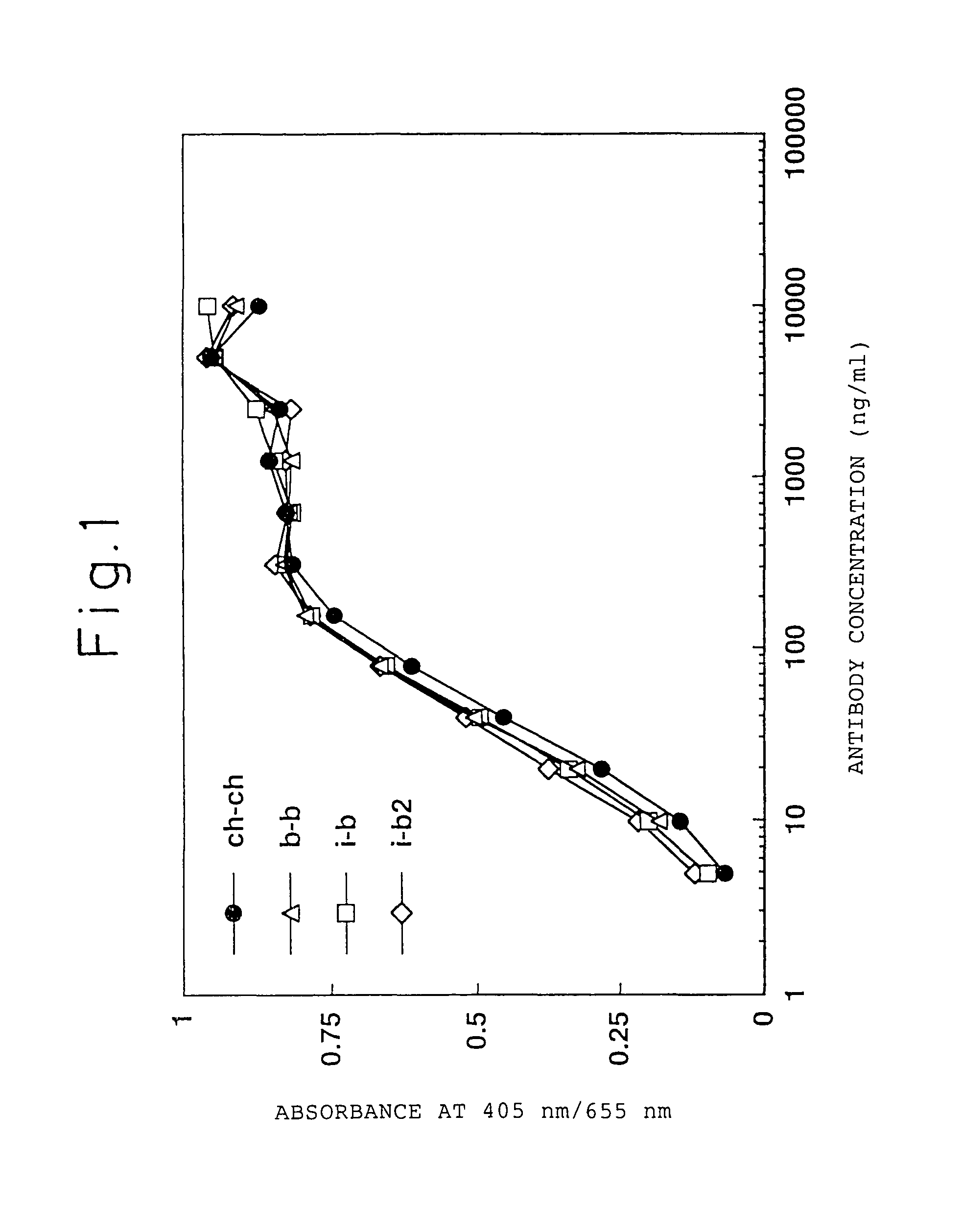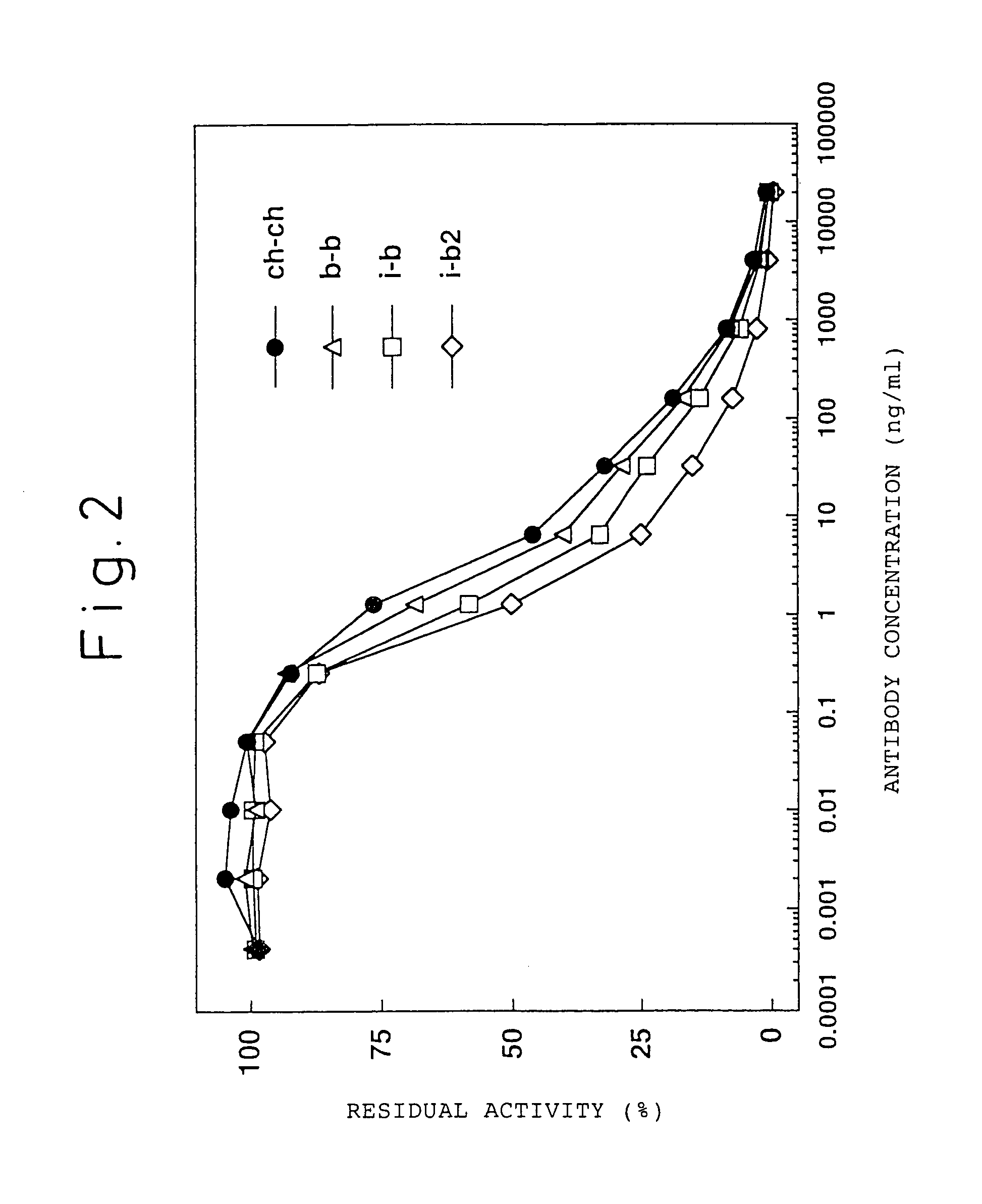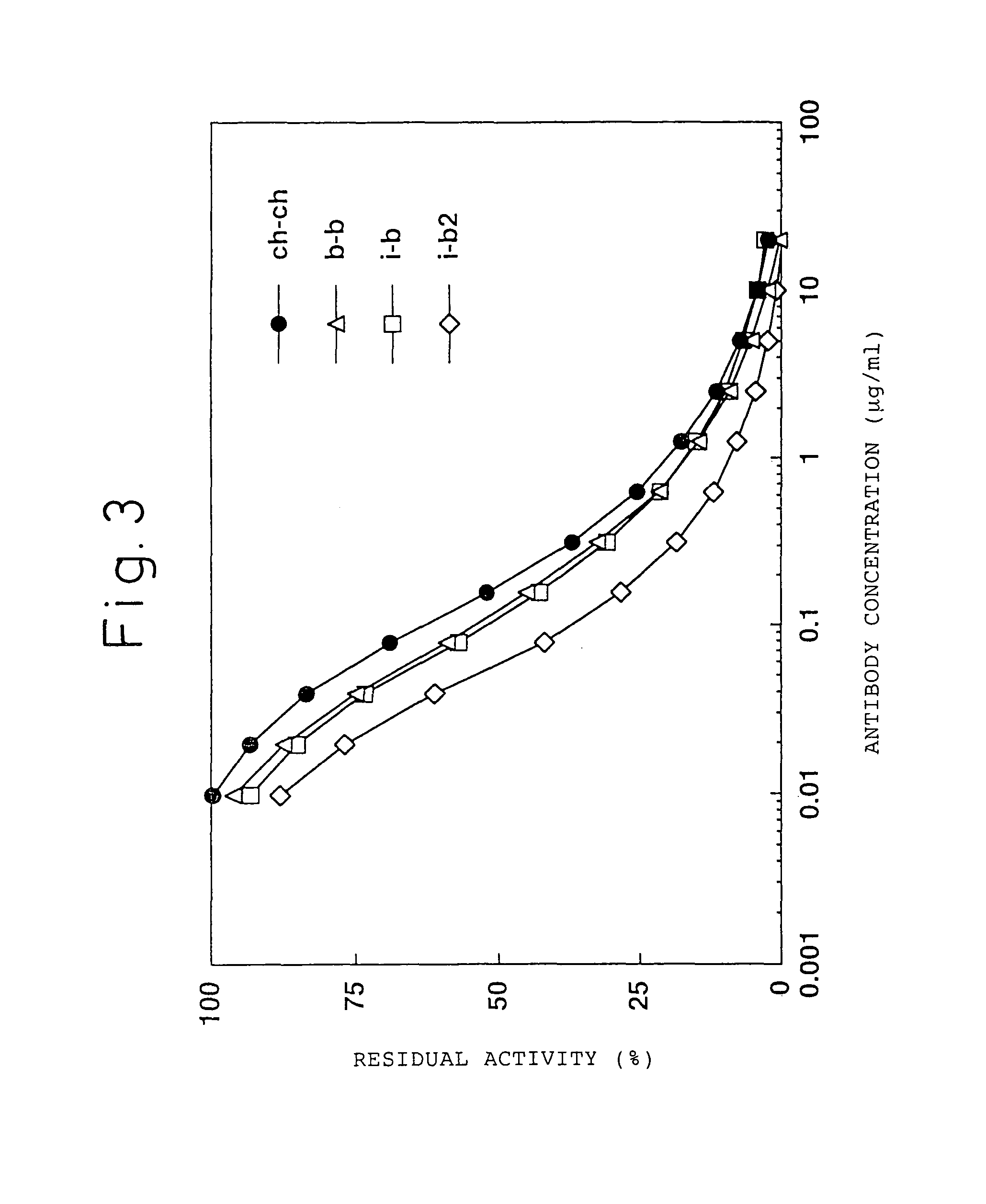Prevention and treatment of diseases associated with blood coagulation
a technology of blood coagulation and disease, applied in the direction of immunoglobulins against animals/humans, drug compositions, cardiovascular disorders, etc., can solve the problems of multiple organ failure blood clot formation, etc., and achieve the effect of increasing the concentration of human tissue factor
- Summary
- Abstract
- Description
- Claims
- Application Information
AI Technical Summary
Benefits of technology
Problems solved by technology
Method used
Image
Examples
example 1
Generation of Experimental Mice
[0138]A vector in which a gene encoding human tissue factor (SEQ ID NO: 103) had been inserted into an animal expression vector pCOS1 (hTF-pCOS1) was digested with a restriction enzyme PruI and linearized, which was then introduced into a human myeloma cell line KPMM2 (FERN P-14170) by electroporation.
[0139]pCOS1 was constructed by removing the antibody gene from HEF-PMh-gγ1 (WO 92 / 19759) by digesting with EcoRI and SmaI and then by ligating the EcoRI-NotI-BamHI adaptor (Takara Shuzo). This was cultured in a RPMI1640 medium (containing 20% FCS hIL-6: 4 ng / ml) containing 1 mg / ml G418, and the cells that grew were confirmed to be the expression of human tissue factor using anti-human tissue factor antibody (American Diganostica) by flow cytometry. This gave a cell line KPMM2 / TF226 that has introduced a human tissue factor gene therein.
[0140]The parent strain (KPMM2 / parent) before the introduction of the above human tissue factor gene and the gene-introdu...
example 2
[0144]The effect of the humanized anti-human TF antibody version “i-b2” was investigated in the model described in Example 1. Five to six weeks after the implantation of KPMM2 / TF226 to SCID mice (CLEA Japan, male, 7-week old, mean body weight: about 22 g), at when platelet counts fell to about half that of the non-tumor-implanted group, confirming the persistence of a hypercoagulable state, and thus from day 45 after the implanted 1 mg / kg of humanized anti-human TF antibody version “i-b2” was intravenously administered once a week. As a result, on day 3 after the administration of humanized anti-human TF antibody version “i-b2”, platelet counts recovered to a level higher than that in the non-tumor-implanted group, and platelet counts were maintained at a level equal to that in the non-tumor-implanted group during the period from the start of the administration to week 3 when the experiment ended.
[0145]On day 6 after the third administration of humanized anti-human TF antibody versi...
example 3
[0146]LPS dissolved in physiological saline was continuously injected into a vein at a done of 1 mg / kg / hr (2 ml / kg / hr) for 6 hours to cynomolgus monkeys (imported from Chuang Primates Experimental Animal Research Center, Nanning, the People's Republic of China, equal numbers of males and females, estimated age: 5-7 years old, body weight: 2.99-5.81 kg) under isoflurane anesthesia. Intravenous administration of humanized anti-human TF antibody “version i-b2” at 0.3 mg / kg (1 ml / kg) to monkeys of the humanized anti-human TF antibody-administration group, and that of a solvent (20 mM sodium acetate / 150 mM NaCl, pH 6.0) to monkeys of the control group were made respectively 10 minutes before the start of continuous injection of LPS.
[0147]At the end of continuos injection of LPS, citrated blood and normal blood were drawn via the catheter mounted to the femoral artery, and prothrombin time, plasma concentration of fibrinogen and serum concentration of fibrin degradation products were dete...
PUM
| Property | Measurement | Unit |
|---|---|---|
| weight | aaaaa | aaaaa |
| pH | aaaaa | aaaaa |
| length | aaaaa | aaaaa |
Abstract
Description
Claims
Application Information
 Login to View More
Login to View More - R&D
- Intellectual Property
- Life Sciences
- Materials
- Tech Scout
- Unparalleled Data Quality
- Higher Quality Content
- 60% Fewer Hallucinations
Browse by: Latest US Patents, China's latest patents, Technical Efficacy Thesaurus, Application Domain, Technology Topic, Popular Technical Reports.
© 2025 PatSnap. All rights reserved.Legal|Privacy policy|Modern Slavery Act Transparency Statement|Sitemap|About US| Contact US: help@patsnap.com



